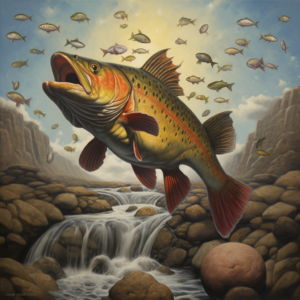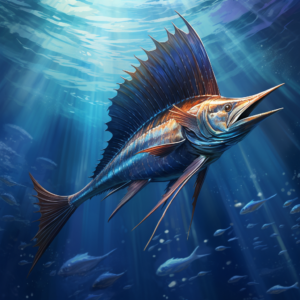Trout fishing is a rewarding endeavor that combines the thrill of the catch with the beauty of nature. These elusive fish are known for their fighting spirit and culinary value, making them a prized target for anglers. In this guide, we unveil the treasures of trout fishing, offering tips and techniques that promise a successful and enjoyable experience on the water. Let’s embark on this trout fishing adventure together!
Understanding Trout Behavior: The Key to Success
To excel in trout fishing, it’s essential to understand the behavior and habits of these fascinating fish.
1. Habitat Preferences
– Stream and Rivers: Trout often inhabit streams and rivers, where they find food and shelter in the currents.
– Lakes and Reservoirs: In lakes and reservoirs, trout prefer deeper, cooler waters, especially during the summer months.
2. Feeding Habits
– Diet: Trout primarily feed on insects, crustaceans, and small fish. Understanding their diet can help you choose the right bait.
– Feeding Times: Trout are most active during the early morning and late evening, making these ideal times for fishing.
Tips and Techniques for Successful Trout Fishing
Armed with an understanding of trout behavior, let’s explore the tips and techniques that can enhance your trout fishing success:
1. Choosing the Right Bait
– Natural Bait: Natural baits like worms and insects are highly effective for trout fishing, closely mimicking their natural diet.
– Artificial Lures: Artificial lures, such as spinners and spoons, can also be effective, especially when targeting larger trout.
2. Perfecting Your Casting Technique
– Accuracy: Work on your casting accuracy, aiming to present the bait naturally in trout holding areas.
– Distance: Develop your casting distance to reach prime trout spots, especially in larger bodies of water.
3. Fly Fishing for Trout
– Fly Selection: Choose flies that mimic the natural insects found in the trout’s habitat, enhancing your chances of success.
– Casting Skills: Hone your fly casting skills, learning techniques like the roll cast and the overhead cast for effective fly fishing.
4. Stealth and Patience
– Approach Quietly: Trout are wary fish, so approach your fishing spot quietly to avoid spooking them.
– Patience: Exercise patience, giving the trout time to investigate and take your bait.
Enhancing Your Trout Fishing Experience: Additional Tips
To further enhance your trout fishing experience, here are some additional tips that can prove beneficial:
1. Reading the Water
– Identifying Holding Spots: Learn to identify potential holding spots for trout, such as deep pools, undercut banks, and riffle areas.
– Observing Insect Activity: Observe insect activity on the water, which can indicate the presence of feeding trout.
2. Gear and Equipment
– Rod and Reel: Choose a rod and reel that suits your fishing style, whether it’s spinning, baitcasting, or fly fishing.
– Line and Leader: Select the appropriate line and leader material, considering factors like water clarity and trout species.
Conclusion
Trout fishing is a journey of discovery, where each expedition offers the chance to unveil the treasures that these waters hold. As you navigate the world of trout fishing, may these tips and techniques guide you to success, promising memorable catches and enriching experiences. Here’s to the joy of trout fishing, where every outing is a step closer to becoming a trout angler par excellence.




